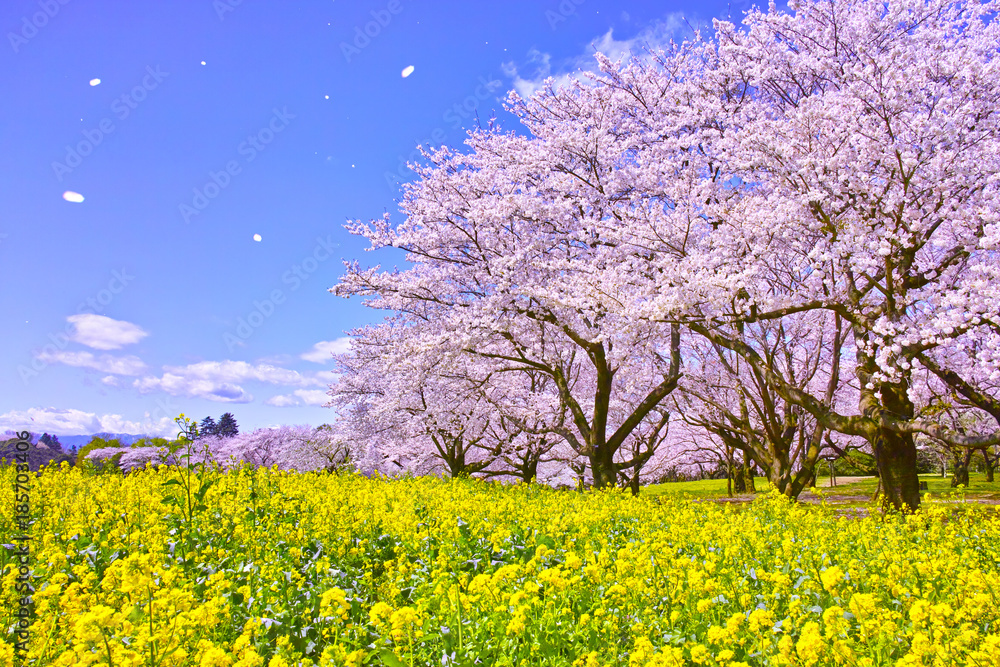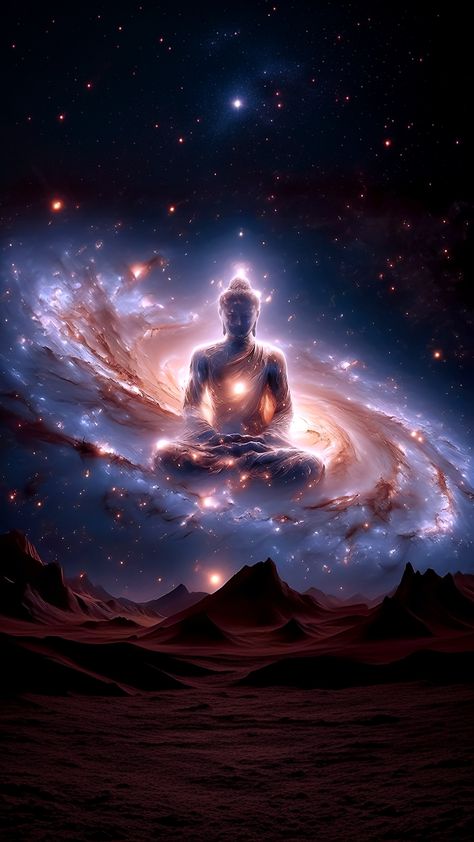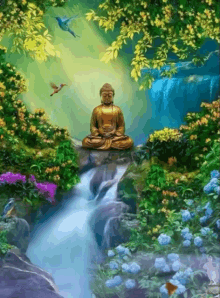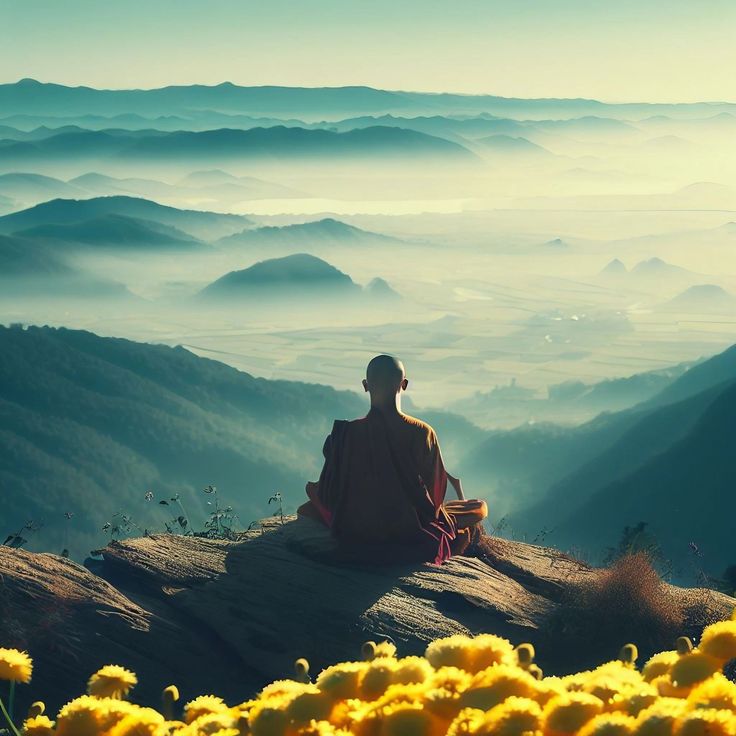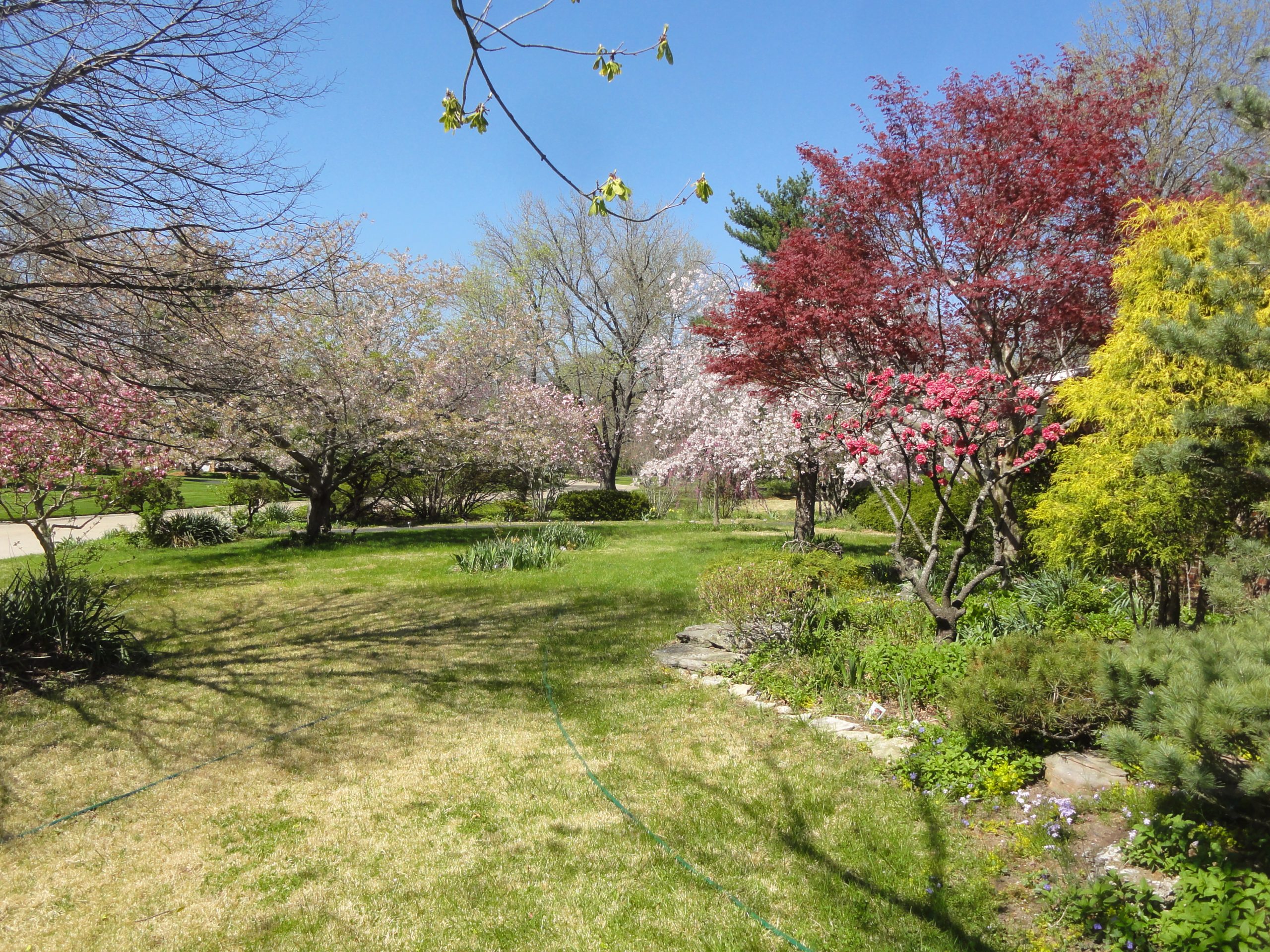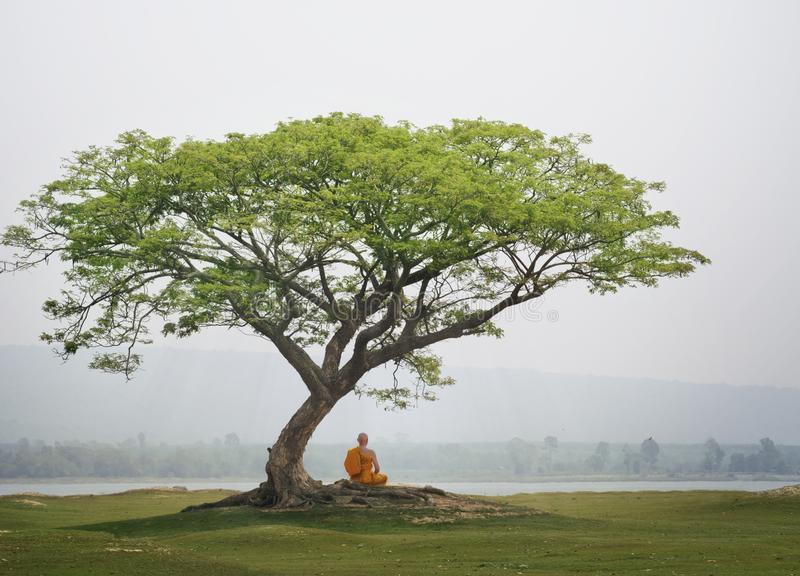The Metta Sutta, Friendship Scripture, says, “May all beings be comfortable, secure and well-settled in comfort!” If we all wish thus, there will be no suffering. Dictators and the like lack this, making all suffering. This is due to their triple poisons.
A proverb says, “If shared, sorrow is halved and happiness doubled.” We can’t be happy if others are unhappy, because we are interrelated/relative. This is because of the universal truth/ethic of the Dharma of Dependent Co-origination.
Even if our original hôkyô, jewel mirror, may be defiled with the karma of the triple poisons, it can become the Dharma mirror (hôkyô) samadhi (synthesis) when polished with the triple learnings of morality, samadhi, and prognosis.
Then, we can share the four limitlessnesses of friendship, compassion, joy, and liberation. Religions’ ideal and everyone’s potential is to become a friend in need of all as shown by Metteya (Friendship) Bodhisattva (cf. Mitra: Friend).
March 29, 2025, C.E.
Notes:
- The translation of metta/mitra as loving kindness poses the opposite of hating malice, but friendship according to the etymological meaning conveys a neutral, unattached, objective, rational relationship, thus not overacting to others at parting with loved ones or meeting the hated, etc. as well as embracing all living beings, not limited to humans. The sun became worshiped as the supreme friend for humans and other living beings as Mitra in India and Mithra in Iran etc., and fîurther in Mazda and Massiah, Messiah, Christ, etc. This reflects the common, universal understanding as expressed in the proverb “A friend in need is a friend indeed.”
- The Karanîya Metta Sutta, Dutiful Friendship Scripture (K.N.9, Sn.1.8):
One, witnessed that path of peace,
Intent on goodness should do this:
Able, upright, truly straightforward,
Well-spoken, tender, and unproud,
Satisfied and well-behaved,
Little obliged and lightly lived,î
Calm-sensed, wise, not conceited,
Not coveting wealthy families,
Causing no anger or reproach
By the wise ones later on.
May all beings be comfortable, secure,
And well-settled in comfort!
Whatever living beings there may be,
Without remainder either moving or still,
Long or great, medium or short,
Subtle or coarse,
The seen or the unseen,
Those living near and far away,
Those born and to-be-born –
May all beings be well-settled in comfort!
Let no one deceive another and,
Never overproud upon another in any way,
Let no one with anger or ill-will
Wish suffering upon another wickedly.
As a mother definitely protects,
Her child, the only child, with her life.
Like this for all beings indeed,
May one cultivate the mind limitlessly!
And for the entire world with friendship,
May one cultivate the mind limitlessly,
Up and down, and in four directions,
Unbound, unhateful, without ill-will!
Staying, walking, seated, or lying down,
May one stay departed from drowsiness.
May one be sustained in this mindfulness.
This is said to be the Brahma-abode here.
The virtuous one not approaching views,
Is fully provided with the right vision.
May one be detached from lust! –
One doesn’t go to the womb-stay again.
Note:
- Friendship is the dharma (truth/ethic), natural conclusion of the Dharma of all dharmas (Dependent Co-origination), and the common ideal of religions (Mitra, Mithra, Milu, Maitreya, Messiah, et al), as the common saying expresses:”A friend in need is a friend indeed.”
- “Brahma-abode (Brahma-vihāra)” may mean Sublime living.
- “Womb-stay” is a stock phrase expressing “stay in sense objects” to get into the becoming process (samsara: birth-death, impermanence).
- “The Dharma (Norm/Law/Truth/Ethic) of all dharmas (forms/phenomena/ truths/ethics)” is Dependent Co-origination, i.e., all phenomena are interdependently co-originated on limitless causes and conditions (similar to the Law of Causality, but deeper and wider – beyond conventions, conceptions, objects, etc.). This means that we are interrelated with other beings (other species, elements, stars, etc.), and relatives to each other, and that we must therefore live together harmoniously and strive to make a wholly wholesome world to become harmonious, health, and happy.
- The Triple Poisons are desire, divisiveness, and delusion (of a self-same, self-sovereign self). The “Triple Only” are only me, only now, and only money (short-sighted views and actions, which make the wider world worse) , which can be cured by the Triple Learnings of morality, concentration, and prognosis.
- The triple learnings are morality, integration, and prognosis (sîla, samâdhi, prajñâ). This is done by still sitting (zazen: sitting meditation), stilling karma (action with the triple poisons of desire, divisiveness, delusion), settling in samadhi (harmonious integration: nirvana), and providing prognosis to cultivate our volition (to action), emotion, and intellection.
- Bodhi-sattva, awakening being, was first applied to Gotama before he became Buddha, Awakened One. This term bodhi-sattva was later used for idealized figures who would save the people of the world, like Avalokita-īśvara (Lookdown-mighty)/Avalokita-svara (Lookdown-sound) Bodhisattva, Bodhisattva of Compassion, the most popular one (which seems to be the idealized figure of the Buddha, from the description of his “avalokita looking down over the world/people” with compassion). He became bodhi-sattva to awaken all.
- Religion derives from Latin religare (reunion). Religion is, thus, to reunite with holiness (wholly wholesomeness, cf. Rudolf Otto’s definition of religion as the Holy) from sin (=separation, separated sick, cf. a-sun-der, sundry). To reunite with the holiness of the limitless ocean of life from being a separated small bubble or foam of ego or group ego is the goal of anyone or a universal religion, where one lives as a true friend in need of all, as expressed in Mitra, Mithra, Metteya, Maitreya, Mazda, Massiah, etc., and who lives in limitless life, light, liberation, and love.
友情経は「一切衆生が快適で安全で、 安楽に暮らせますように!」と言う。もし私達が皆このように望むなら、苦は存在しない。独裁者やそれに似た物はこれを欠き、一切を苦にする。これは三毒 による。
「分かち合えば、悲しみ半分、喜び二倍」と諺は言う。私達は相関し相対だから、他が不幸では幸福になりえない。これは普遍の真理/倫理である縁起法の為である。
例え本来の宝鏡が三毒の業に汚染されていたとしても、それは戒定慧の三学に磨かれれば法鏡になりうる。
そうすれば私達は慈悲貴社の四無量を分かち合うことができる。宗教の理想であり誰でもの可能性は弥勒菩薩により示されるように必要の時の友になることである。
2025共通年3月29日
註:
- Metta/mitraを愛情ある親切と訳すと憎悪ある悪意の対語を生むので、その語源の意味である友情とすれば中立的で、執着のない、客観的・合理的な関係を伝えることができて、人間のみならず一切のものを包容し、愛する者との別れや厭わしい者への出会いに対する過剰反応をすることがない。太陽は人間や他の生物に対する最高の友としてインドではミトラ、イランではミスラとして崇拝され、更にはマズダ、マシーア、メシア、キリストなどとして崇拝された。これは「まさかの時の共は真の友」という諺で表される普通の普遍の理解を反映したものである。
- 「当為友情経(共にある友として為すべき教え)(法句経1.8、雑阿含経9):
善に励み、その平和の道を
現観した者が為すべき事は:
有能で、正直で、真に率直、
善語し、柔和で、誇るなく、
足るを知り、養い易く、
雑事なく、簡素に生き、
冷静で、思い上がらず、
檀家に赴いて貪る勿れ。、
賢者たちから後に怒りや
非難をされることはなし。
一切衆生が快適で安全で、
安楽に暮らせますように!
どのような生きものであっても、
動くものも、静止しているもの、
長いもの、大きいもの、中位も、
繊細なもの、粗野なものもみな、
見えるものも、見えないものも、
近くにいるもの、遠くにいるもの、
生まれたもの、生まれ来るものも、
衆生が安楽安寧に暮らせます様に!
だれも他者を欺くことなく、
誇り高く振る舞うことなく、
誰も怒りや悪意を持って、
他者に苦を望まないように。
母親が我が子を、その一人子を
命懸けでその安全に守るように、
その様に生きとし生けるものに、
無量の思いやりを修養する様に!
そして、友情をもって全世界に、
無量の思いやりを修養する様に、
上下、四方に、憎しみを抱かず、
悪意を持たず、敵も持つ事なし!
留まり、歩き、座り、臥しても、
眠気から遠ざかっているように!
この様な専念を持ち続ける様に!
これこそは梵住と言われている。
見解に囚われない徳のある者は、
正しい視野を完全に備えている。
欲望対象から欲を離す様に導け!-
再び体内滞在に行かぬようにと。
注記:
a.友情は法(真理/倫理)、諸法の法(因縁生起)の自然な結論、であり、諸宗教の共通の理想(Mitra、Mithra、Milu、Maitreya、Messiahなど)であり、普通の諺では、「必要の時の友こそ真の友」と表現されてます。
b.「梵住(ブラフマー・ヴィハーラ)」は「梵天の住居」と共に「崇高な生き方」を意味しているかもしれません。
c.「胎内滞在」とは、五感の対象に留まり、生死や無常の過程(サンサーラ:輪廻、直訳:完全な流転)に入ることを表す常套句です。
三毒は貪瞋痴(自己同一、自己主宰の我という愚痴)である。三だけは今だけ、金だけで自分だけということであり(短見・短絡行動で、より広い世界を悪化させる)が、戒定慧の三学はこれらを治癒できる。
- 諸法(形態・現象)の法(規則・法則・真理・倫理)は縁起(因縁生起)、即ち、一切現象は無量の直接原因と間接条件により相依生起するということである(因果則に似ているがさらに深く広い-世俗、観念、対象などを超える)。これは私達が他者(多種、要素、星宿など)と相依関係にあることを意味し、相互に相対的であり、私達が調和、健康、幸福になる為には共に調和して生き、全体健全な世界を作る努力をしなければならないことを意味する。
- 三毒は貪瞋痴(自己同一、自己主宰の我という愚痴)である。三だけは今だけ、金だけで自分だけということであり(短見・短絡行動で、より広い世界を悪化させる)が、戒定慧の三学はこれらを治癒できる。
- 三学は戒定慧(sîla, samâdhi, prajñâ)である。これは静坐により、業(貪瞋痴三毒を伴う行為)を静め、三昧(調和総合:涅槃)に安住し、般若(処方:知恵)を与え、知情意を修養する。
- 菩薩(覚醒に向かう者)はゴータマがブッダ(覚者)になる以前を指してに付けられた呼び名である。菩薩という言葉は後に、観音(Avalokiteśvara:観自在尊/Avalokitasvara:観世音)菩薩(慈悲の菩薩、最も人気のある菩薩であるが、ブッダが慈悲で「世界/人々を見下ろした: avalokitaという経典の記述から来た、その理想像と思われる)のように世界の人々を救う理想像に用いられた。彼は一切を覚醒させる菩薩となった。
- Religion(宗教)はラテン語religare (再結合)に由来する。だから、宗教は罪(sin = 分離、分離病患, cf. a-sun-der, sundry)から聖(holiness = wholly wholesomeness 全体健全、参照 Rudolf Ottoの宗教の定義:the Holy)に再結合することである。
エゴやエゴ集団の小さく分離した泡沫から無限の生命の大会の聖性に再結合するのは誰でもの又普遍宗教の目標であるが、 Mitra, Mithra, Metteya, Maitreya, Mazda, Massiah, etc(友を意味する)で表されるように、一切の必要の時の友は真の友として生きることであり、無量寿、無量光、無量解(脱:解放)、無量愛を生きるものである。

.
.
.
